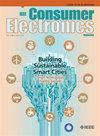LKAT-GAN: A GAN for Thermal Infrared Image Colorization Based on Large Kernel and AttentionUNet-Transformer
IF 10.9
2区 计算机科学
Q1 ENGINEERING, ELECTRICAL & ELECTRONIC
引用次数: 0
Abstract
Because thermal infrared (TIR) images are not affected by light and foggy environments, which are widely used in various night traffic scenarios. Especially, thermal infrared images also play an important role in autonomous vehicles. However, low contrast and lack of chromaticity have always been their problems. Image colorization is a vital technique to improve the quality of TIR images, which is beneficial to human interpretation and downstream tasks. Despite thermal infrared image colorization methods have been rapidly improved, the detail blurriness and color distortion in colorized images remain under-addressed. Mostly because these methods cannot effectively extract the ambiguous feature information of TIR images. Hence, we propose a large kernel (LK) U-Net and Attention_U-Net-Transformer (ViT-Based) based generative adversarial network. An LK_U-Net is designed to extract the feature of TIR images. Then, a branch structure composed of Attention_U-Net and ViT-Based can provide the network with semantic information from different perspectives to decode features. In addition, a composite loss function is employed to ensure the network generates a high-quality colorized image. The proposed method is evaluated on KAIST and IRVI datasets. Experimental results demonstrate the superiority of the proposed LKAT-GAN over other methods for the task of thermal infrared image colorization. The code is available atLKAT-GAN:一种基于大核和注意力变换的热红外图像着色GAN
由于热红外(TIR)图像不受光和雾环境的影响,因此广泛应用于各种夜间交通场景。特别是热红外图像在自动驾驶汽车中也发挥着重要作用。然而,低对比度和缺乏色度一直是他们的问题。图像彩色化是提高TIR图像质量的重要技术,有利于人类的判读和下游任务。尽管热红外图像的彩色化方法得到了迅速的改进,但彩色图像中的细节模糊和颜色失真问题仍然没有得到解决。主要是因为这些方法不能有效地提取TIR图像的模糊特征信息。因此,我们提出了一种基于大内核(LK)U-Net和Attention_U-Net-Transformer(基于ViT)的生成对抗性网络。LK_U-Net被设计用于提取TIR图像的特征。然后,由Attention_U-Net和ViT-Based组成的分支结构可以从不同的角度为网络提供语义信息来解码特征。此外,还采用了复合损失函数来确保网络生成高质量的彩色图像。在KAIST和IRVI数据集上对所提出的方法进行了评估。实验结果证明了所提出的LKAT-GAN在热红外图像彩色化方面优于其他方法。代码可在https://github.com/jinxinhuo/LKAT-GAN.
本文章由计算机程序翻译,如有差异,请以英文原文为准。
求助全文
约1分钟内获得全文
求助全文
来源期刊
CiteScore
7.70
自引率
9.30%
发文量
59
审稿时长
3.3 months
期刊介绍:
The main focus for the IEEE Transactions on Consumer Electronics is the engineering and research aspects of the theory, design, construction, manufacture or end use of mass market electronics, systems, software and services for consumers.

 求助内容:
求助内容: 应助结果提醒方式:
应助结果提醒方式:


